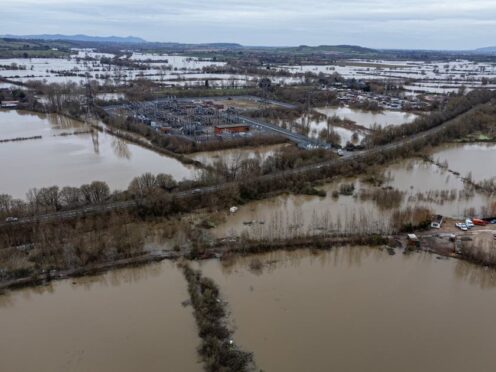
Downpours in the storms which battered the UK and Ireland last autumn and winter were made around 20% heavier by climate change, scientists have said.
A rapid attribution study has assessed the role of rising temperatures in the storms and heavy rain which led to at least 13 deaths and widespread damage across the two countries, as more than a dozen severe storms swept in between October and March.
It found that autumn and winter storms over the UK and Ireland were becoming wetter due to human-caused global warming.
One of the scientists involved in the study issued a blunt warning that “climate change is already making life shittier”, while another expert said the winter storms made things worse for people already struggling with the cost-of-living crisis, and hit physical and mental health.
The UK and Ireland saw 13 to 14 severe storms in 2023/24, 11 of which were named as part of a western Europe warning system.
They led to severe and repeated flooding and power outages, disrupted travel, caused the loss of crops and livestock, and left farmers with waterlogged fields which they could not plant in the spring.
The research used weather data and climate models to compare the storm severity and associated rain, as well as rainfall over the storm season, between today’s world and the cooler climate before industrialisation.
Human activity, such as burning fossil fuels, which puts climate-warming greenhouse gases into the atmosphere, has pushed up temperatures by around 1.2C since the pre-industrial period.
The study found human-induced climate change had led to the average rainfall on stormy days becoming around 20% heavier.
It said the kind of intense storm rainfall seen in 2023/2024 had become 10 times more likely.
Where it would have occurred about once every 50 years in the pre-industrial period, in today’s world, similarly intense storm rainfall was expected to occur around every five years.
The study also looked at the total rainfall for October to March, which was the second wettest such period on record for the UK and the third wettest for Ireland, and found climate change had increased rainfall over the season by 6% to 25%.
The wet conditions seen in 2023/2024 would have occurred every 80 years at most in the cooler, pre-industrial era, but were now considered to be four times more likely, occurring about once every 20 years.
If temperatures rose further to 2C of warming, storm rainfall and seasonal rain would increase, the researchers said.
A warmer atmosphere holds more water vapour, a key factor in climate change driving heavier rainfall.
But the “storminess” of the storms showed a decreasing trend in this study, highlighting that more research was needed on how climate change might influence the severity and frequency of windstorms in northern Europe, the researchers said.
Sarah Kew, researcher at the Royal Netherlands Meteorological Institute, warned that the UK and Ireland “face a wetter, damper and mouldier future due to climate change”.
She said: “While the influence of climate change on strong storm winds is less clear, autumn and winter rainfall has become much heavier, bringing more damaging and sometimes deadly floods to urban and agricultural areas.
“Until the world reduces emissions to net zero, the climate will continue to warm, and rainfall in the UK and Ireland will continue to get heavier.”
And Friederike Otto, senior lecturer in climate science at the Grantham Institute – Climate Change and the Environment, Imperial College London, said: “To put it bluntly, climate change is already making life shittier.
“Wetter winters are flooding farms, cancelling football matches, and overflowing sewage systems.
“Groceries are becoming more expensive and Brits holidaying in Europe are having to shelter from record-breaking heatwaves and wildfires.
“Thankfully, we know the solutions – replace oil, gas and coal with cleaner, cheaper renewable sources of energy, insulate homes, restore nature.”
“All this will make life cheaper and better for all, not more expensive,” she added.
Ellie Murtagh, from the British Red Cross, said people were more at risk from storms and flooding if they lived in housing on flood plains, basement flats and mobile homes on coastal sites, while the cost-of-living crisis stopped residents from putting in flood protection measures.
Flood insurance claims in the UK reached a record £573 million from the successive storms, but low-income families were less likely to be insured, and there were multiple costs involved in clearing up from flooding.
“At a time when people’s financial resilience was already being pushed, these storms made things worse,” she said.
“In addition, the agricultural sector has also suffered with storms causing crop losses and financial strains on farmers, which have knock-on consequences on food supply and food prices.”
The World Weather Attribution study involved scientists and experts from the Royal Netherlands Meteorological Institute, the Met Office, Met Eireann, Imperial College London and the Red Cross.

Enjoy the convenience of having The Sunday Post delivered as a digital ePaper straight to your smartphone, tablet or computer.
Subscribe for only £5.49 a month and enjoy all the benefits of the printed paper as a digital replica.
Subscribe